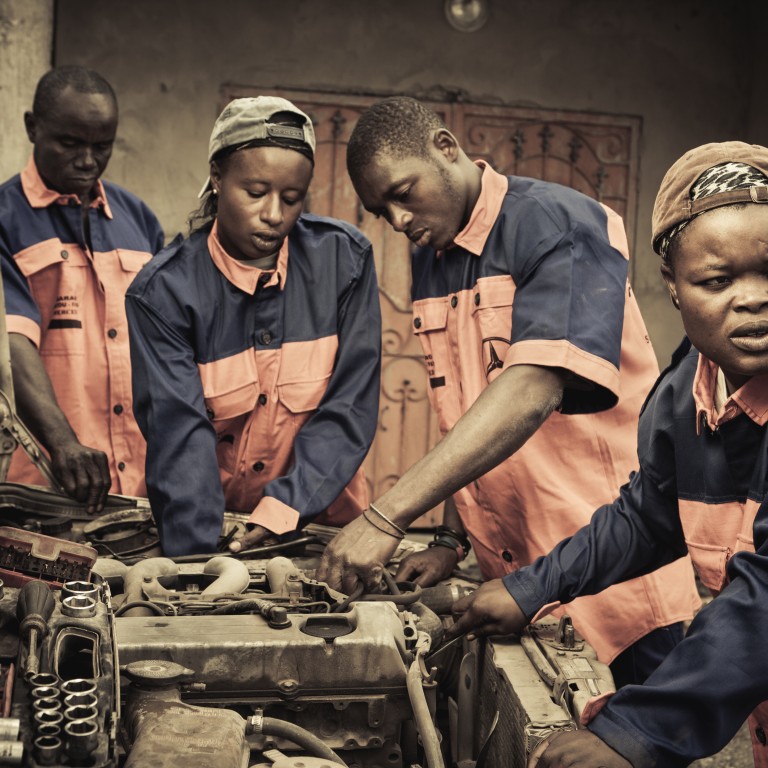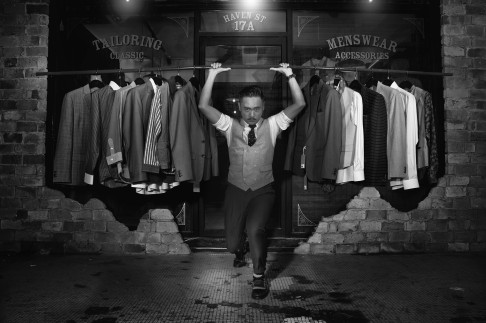
Entrepreneurism around the world gets an alternative look in photo book
The Other Hundred Entrepreneurs covers 95 countries
Who wants to be a millionaire? Gholam Hossein has probably never considered the possibility, but he is a typical entrepreneur. He found a solution to a problem and is making a living out of it.
Hossein is a farmer in the remote mountains of northwestern Iran, whose land was trampled twice a year by nomadic herders on a 500km journey with hundreds of hungry sheep and goats. To save his crops, and provide the nomads with a shortcut, Hossein and his seven sons built a steel cableway across a nearby river, charging the herders a small sum for each animal.

Hossein’s is one in a diverse spectrum of stories from 95 countries in a new photojournalism book, The Other Hundred Entrepreneurs, which celebrates the everyday people who create the majority of the world’s jobs and hold the global economy together.
It also aims to challenge the stereotype. The book’s subjects didn’t go to business school, have never written a business plan, and are highly unlikely to launch an initial public offering.
A lot of people achieve a great deal, live enjoyable lives, have all the same trials and tribulations as the richest people, but aspire to very different things
“So much of the mainstream coverage of entrepreneurship is how to get rich, how to make a fast buck, IPO this, do a franchise,” says Chandran Nair, the book’s project director, and founder and CEO of Hong Kong-based independent think tank the Global Institute for Tomorrow (Gift).
“The idea that everyone’s going to become rich is a lie. And in economic and philosophical terms, how much is rich? A lot of people achieve a great deal, live enjoyable lives, have all the same trials and tribulations as the richest people, but aspire to very different things.”

The glossy hardback is the second in Gift’s The Other Hundred series, a socio-economic project Nair conceived to poke fun at the rich lists whose announcements have become annual events. “They don’t reflect the vast majority of human beings. It’s such a distortion,” says Nair, who is also a member of the World Economic Forum Global Agenda Council for Sustainability.
An open call to photographers attracted 10,000 images and stories for the book from around the world, he says. A panel of judges spent three days debating which 100 would make it to print.
“There were a lot that had beautiful imagery, but they didn’t capture the essence of our idea of entrepreneurship,” Nair says.
Perhaps not surprisingly, China and India were the source of many submissions.
“They are places where a lot of people go and take photographs,” Nair says. “In China, we had five or six brilliant stories, but we can’t pick them all. Even in Hong Kong, we had two or three very good stories.”
The subject of Hong Kong’s entry in the book is tailor Raymond Lun, who opened his own fashion boutique five years ago in Haven Street, Causeway Bay. His clients now include several local celebrities.

And whereas many bankers have jumped ship to join the technology bandwagon, two Baidu employees on the mainland, who left the internet search company to do something different, grabbed the judges’ attention.
After perfecting a beef sandwich based on a traditional Shaanxi snack, Song Xin and Luo Gaojing tried it out on former colleagues in Beijing’s Wudaokou district. It was a recipe for success and their shop has become a go-to place among the district’s IT workers for a meaty snack. The partners have opened a second outlet in the capital and now plan to build a nationwide chain.

Nair, however, says that Iran is one of his favourites “because most of us have such a distorted view of the country. For me [Hossein’s story] says everything about how people get on with life. This is a very remote area and someone is making some money, but at the same time helping others and making sure his land is not damaged”.
Another story Nair particularly likes is from Ghana. Ibrahim Djan Nyampong used to sell arts and crafts in the capital, Accra. Eight years ago, struggling to make a living, he got the idea of making bicycles out of bamboo. Nyampong and his small team of workers now make 300 bikes a year, mainly for export to Europe and the US, which sell for about €350 (HK$2,950) each.

In a workshop outside Moscow, Boris Bazhenov and Alexander Bobin craft mechanical sculptures of animals in polished wood, animated with visible cogs and wheels. The figures take up to nine months to make and are bought by collectors.

Diversity was important in producing the book, which also features female car mechanics in Senegal, a violin repairer in the West Bank, and a brick maker in Mexico. But the idea was not to simply focus on a poor 100 list of entrepreneurs struggling to get by in the developing world. Europe and North America also have their tales told.
Nair gives the example of a shopkeeper in the Canadian city of Montreal. Richard’s floor-to-ceiling shelves heave with all manner of items, from lamps and hats to statuettes and paintings, all used. “He doesn’t sell them, he rents them out”, he says. “His philosophy is that the stuff doesn’t belong to anyone, the object should have many lives.”

Nair says he has been approached about staging a roving exhibition of the stories in Hong Kong, in schools or outside public areas. “The theme could be something along the lines of ‘Bringing the World to Hong Kong’. It could take the shape of 100 locations, for example on footbridges, where one of the 100 stories would be on display for two weeks and then move on.
“The intention is to inspire and get people to broaden their world views, and thus also appreciate what we have compared to so many others, especially at a time when we seem so cynical, sceptical and divided.”
The Hundred Other Entrepreneurs is published by Oneworld Publications and costs US$40. Proceeds go towards the production of future editions.

